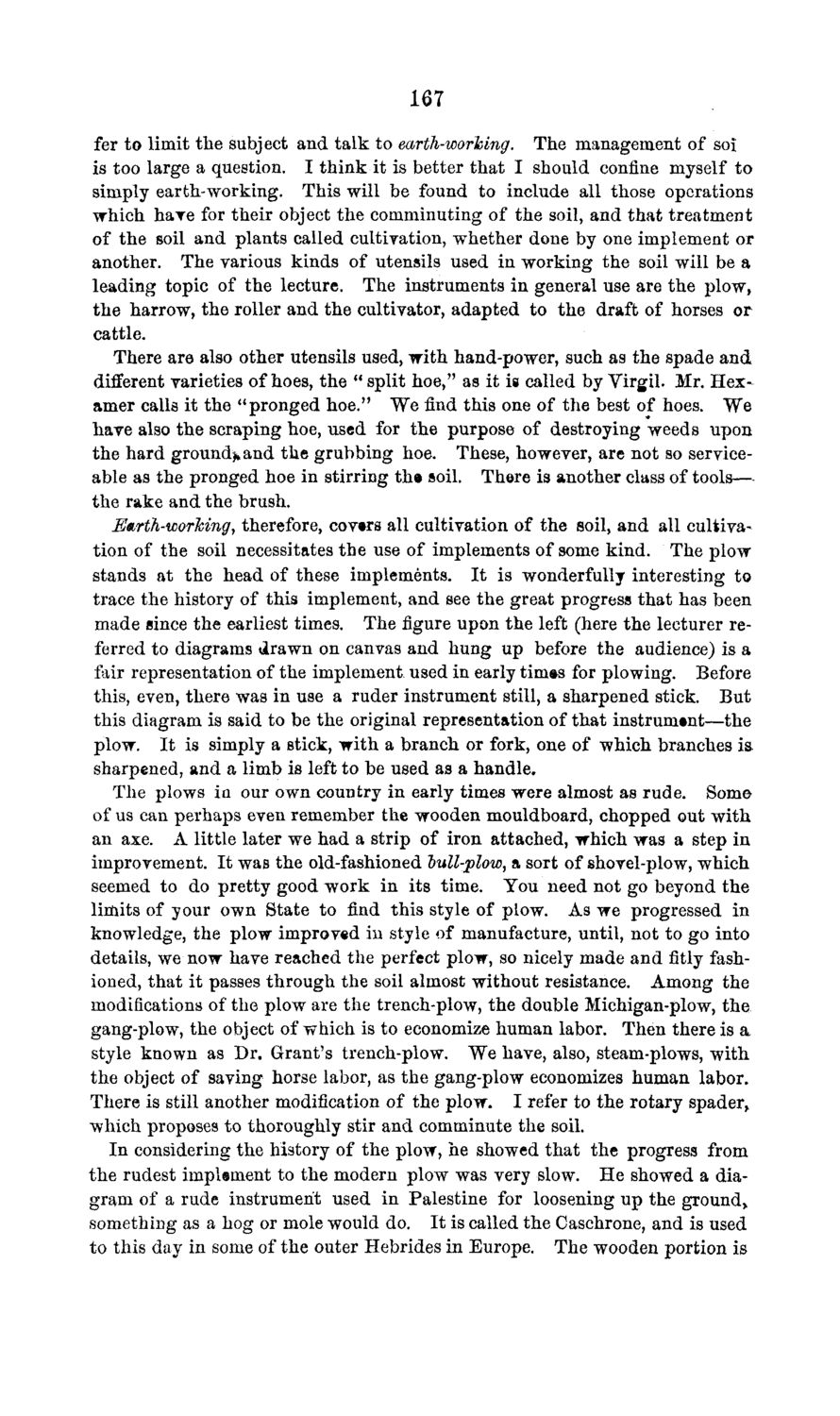| |
| |
Caption: Board of Trustees Minutes - 1869
This is a reduced-resolution page image for fast online browsing.

EXTRACTED TEXT FROM PAGE:
167 fer to limit the subject and talk to earth-worhing. The management of soi is too large a question. I think it is better that I should confine myself to simply earth-working. This will be found to include all those operations which hare for their object the comminuting of the soil, and that treatment of the soil and plants called cultiration, whether done by one implement or another. The various kinds of utensils used in working the soil will be a leading topic of the lecture. The instruments in general use are the plow, the harrow, the roller and the cultivator, adapted to the draft of horses or cattle. There are also other utensils used, with hand-power, such as the spade and different varieties of hoes, the " split hoe," as it is called by Virgil. Mr. Hexamer calls it the "pronged hoe." We find this one of the best of hoes. We have also the scraping hoe, used for the purpose of destroying weeds upon the hard grounds and the grubbing hoe. These, however, are not so serviceable as the pronged hoe in stirring the soil. There is another class of tools— the rake and the brush. Earth-worTting, therefore, covers all cultivation of the soil, and all cultivation of the soil necessitates the use of implements of some kind. The plow stands at the head of these implements. It is wonderfully interesting to trace the history of this implement, and see the great progress that has been made since the earliest times. The figure upon the left (here the lecturer referred to diagrams drawn on canvas and hung up before the audience) is a fair representation of the implement used in early times for plowing. Before this, even, there was in use a ruder instrument still, a sharpened stick. But this diagram is said to be the original representation of that instrument—the plow. It is simply a stick, with a branch or fork, one of which branches is. sharpened, and a limb is left to be used as a handle. The plows in our own country in early times were almost as rude. Some of us can perhaps even remember the wooden mouldboard, chopped out with an axe. A little later we had a strip of iron attached, which was a step in improvement. It was the old-fashioned lull-plow, a sort of shovel-plow, which seemed to do pretty good work in its time. You need not go beyond the limits of your own State to find this style of plow. As we progressed in knowledge, the plow improved in style of manufacture, until, not to go into details, we now have reached the perfect plow, so nicely made and fitly fashioned, that it passes through the soil almost without resistance. Among the modifications of the plow are the trench-plow, the double Michigan-plow, the gang-plow, the object of which is to economize human labor. Then there is a style known as Dr. Grant's trench-plow. We have, also, steam-plows, with the object of saving horse labor, as the gang-plow economizes human labor. There is still another modification of the plow. I refer to the rotary spader, which proposes to thoroughly stir and comminute the soil. In considering the history of the plow, he showed that the progress from the rudest implement to the modern plow was very slow. He showed a diagram of a rude instrument used in Palestine for loosening up the ground, something as a hog or mole would do. It is called the Caschrone, and is used to this day in some of the outer Hebrides in Europe. The wooden portion is
| |